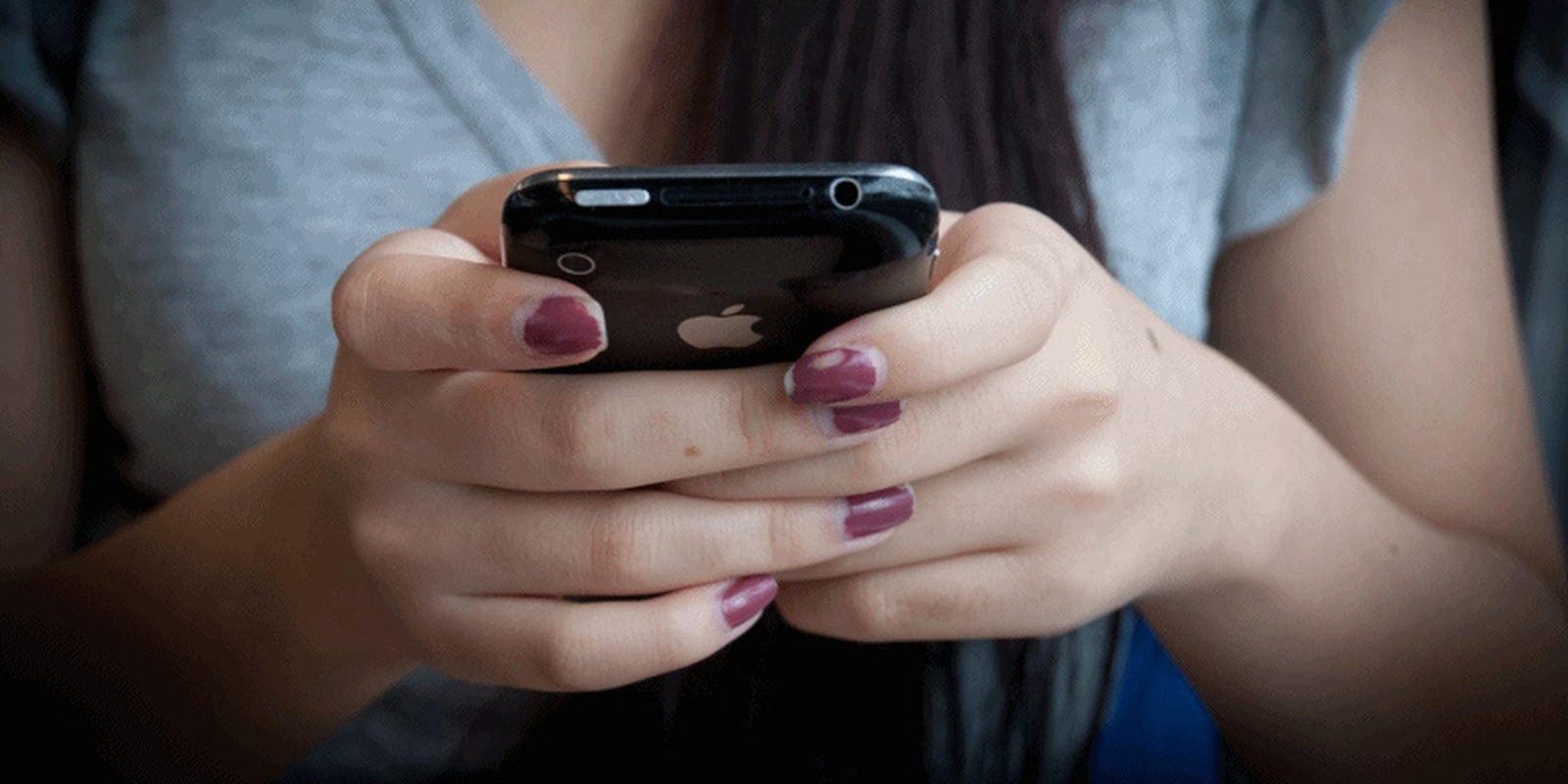Yesterday, Snapchat released its biggest update ever. The disappearing photo-messaging app is now an instant messaging service. It also allows for real-time video chat.
For high school teachers who already viewed the app as a distraction, the news couldn’t be worse. Now students have even more interest in checking their phones for chats from their friends, and doing thigs like this:
This is the world that we live in pic.twitter.com/PYRLIM0hZv
— Joel Pavelski (@joelcifer) May 2, 2014
Tracie Schroeder, a high school teacher in Kansas, found the update to be hugely distracting. “Today was the first day in a long time I actually took phones away. I have no idea what all was included in the update, but you would have thought it was crack. They seriously could not keep away from it. I even had one girl crawl under the table with her phone,” she told Business Insider.
In 16 years of teaching I can’t think of anything that has ever disrupted my classroom more than today’s @snapchat update.
— Tracie Schroeder (@bravesearth) May 1, 2014
Snapchat is popular with people in high school and college, so it makes sense that teachers are going to see distracted students when the app releases a major update like this. It is distracting. As is having access to Twitter, YikYak, Secret, Whisper, Instagram, WhatsApp, Kik, Facebook, and games relating to birds both Flappy and Angry. Apps, in general, are a potential distraction for students. Smartphones, in general, are a potent distraction for students.
Of course educators are going to complain about popular apps. They add yet another hurdle to making The Odyssey interesting.
In trying to pry students’ eyes away from their phones, some teachers and schools have resorted to banning smartphone use on campus altogether. Others, including Schroeder, are more lenient, allowing smartphone use as long as it is not obviously distracting a student. Since smartphones and tablets can be used and are being used as classroom learning tools, banishing them to avoid students frittering time away snapping and chatting is an approach that will face more resistance as classrooms continue to integrate technology. Perhaps schools could institute a block on the app, which YikYak did at many high schools in the U.S.
Or maybe they could use the app as a learning tool. Is it possible?
Actually, yes: It’s already happening in the U.S., and Snapchat’s added chat function will make it easier to supplement images with text.
A Bowling State University professor has already started creating assignments that use Snapchat. Radhika Gajjala has her students download Snapchat and integrates the app into her assignments for distance learners, asking them to use snaps to document their learning process. Gajjala believes educators should be looking for ways to turn popular apps into learning tools. “In high school and undergrad education, you go where the student is, and that’s what they are doing, whether you like it or not,” she told DML Central.
Snapchat’s big thing is disappearing communications, so it’s not going to be a good platform for teachers who want to go back and grade the content of snaps (although, of course, they could take screenshots). But it could be a way to monitor participation-based homework in a way that appeals to students.
While Snapchat is going to continue being a distraction for students in the classroom, teachers who find ways to engage with their students on social apps, whether they create assignments that involve Snapchat like Gajjala or concoct a different approach. In 2013, 73 percent of Advanced Placement and National Writing Project teachers said students used smartphones in classrooms to complete work, and the introduction of another chatting tool means students will have another platform for collaboration, according to the Pew Research Center. As annoying as it is to have students distracted by the latest update, it’s a side effect of the introduction of a potent learning tool.
So maybe Schroeder can make the best out of a frustrating situation and roll her students’ obsession with Snapchat into her science lessons. Perhaps a quiz on the average velocity of a body crawling underneath a desk is in order?
H/T Business Insider | Photo via Flickr/Jhaymeisvipphotography (CC BY 2.0)


